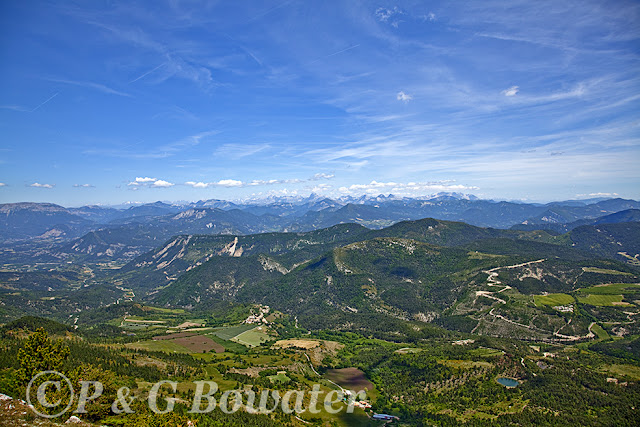Visit our website at: www.bowater.fr to see a comprehensive selection of our work and a large range of photographs for sale as limited edition prints.
The route to the top of the Col seemed particularly long and hard then, probably because our canny donkey decided to stop and get his breath back every 50m or so. This time we drove to Joncheres. The Col didn't seem quite as forbidding as before but was a little less appealing as the lower half has been cut for timber since our first visit and an access track has replaced the lovely old path that used to snake up through the woods. But as the track entered the beech woods above the pine forest it was itself again.
It would be sentimental and illogical to complain about the thriving local forestry industry which goes a long way towards preserving the forests and creating new wooded areas of cleverly-managed and attractive plantations. The managed forests are often at least as attractive to us and to wildlife as their more ramshackle neighbours. And of course they create profit and employment. Nevertheless, it's a pity that the age of timber extraction with heavy horses and overhead ropeways has passed.
 |
| Looking down on the perched village of Joncheres from the path to the Col de Volvent |
The Col de Volvent, now used only by the occasional walker, was once a busy mule route from the Drome valley into the then more densely populated and economically important valley of the Roanne. The track leads to St. Nazaire le Desert, once renowned for its fairs. The path leads up to the Montagne de Praloubeau which rises to 1525 m and, to the north, the Montagne d'Aucelon, which form a natural barrier between the two valleys.
One of our reasons for returning to the Col de Volvent at the end of May was the hope of seeing the wild peonies in bloom. This year we nearly missed them but found a few still flowering on shady slopes. The peonies are far from common and we don't know where else to find them.
Having found the peonies and the path through the beech woods still intact, we settled down for lunch on the summit of the Gros Moure. The weather was perfect apart from occasional gusts of wind and an alarming roaring, rattling sound from the other side of the rocky summit. We presumed that this noise came from the wind through a tarpaulin or a corrugated iron shed put up by the shepherds who bring their flocks to the mountain pastures in summer. Then we found the true cause of all this drama. A whirlwind, far fiercer than the dust devils we've been used to seeing in towns, came over the summit and headed towards us, cutting off the grasses and small vegetation like a rampaging circular saw blade, about 2m in diameter. It's hard to say how powerful it really was and probably it held no threats for us but it severely shook sizeable pines as it cut a swathe past us, roaring like a train.
Is paranoia winning? After the whirlwind, we were woken from our reverie by huge shadows and looked up to see several Griffon Vultures (Vautour Fauve) circling above our heads.
Our walk took us southwards, down the escarpment towards the Col de la Motte with the magnificent views so typical of this area.
 |
| Views over Joncheres and Trieves to the Parc National des Ecrins. |
 |






No comments:
Post a Comment